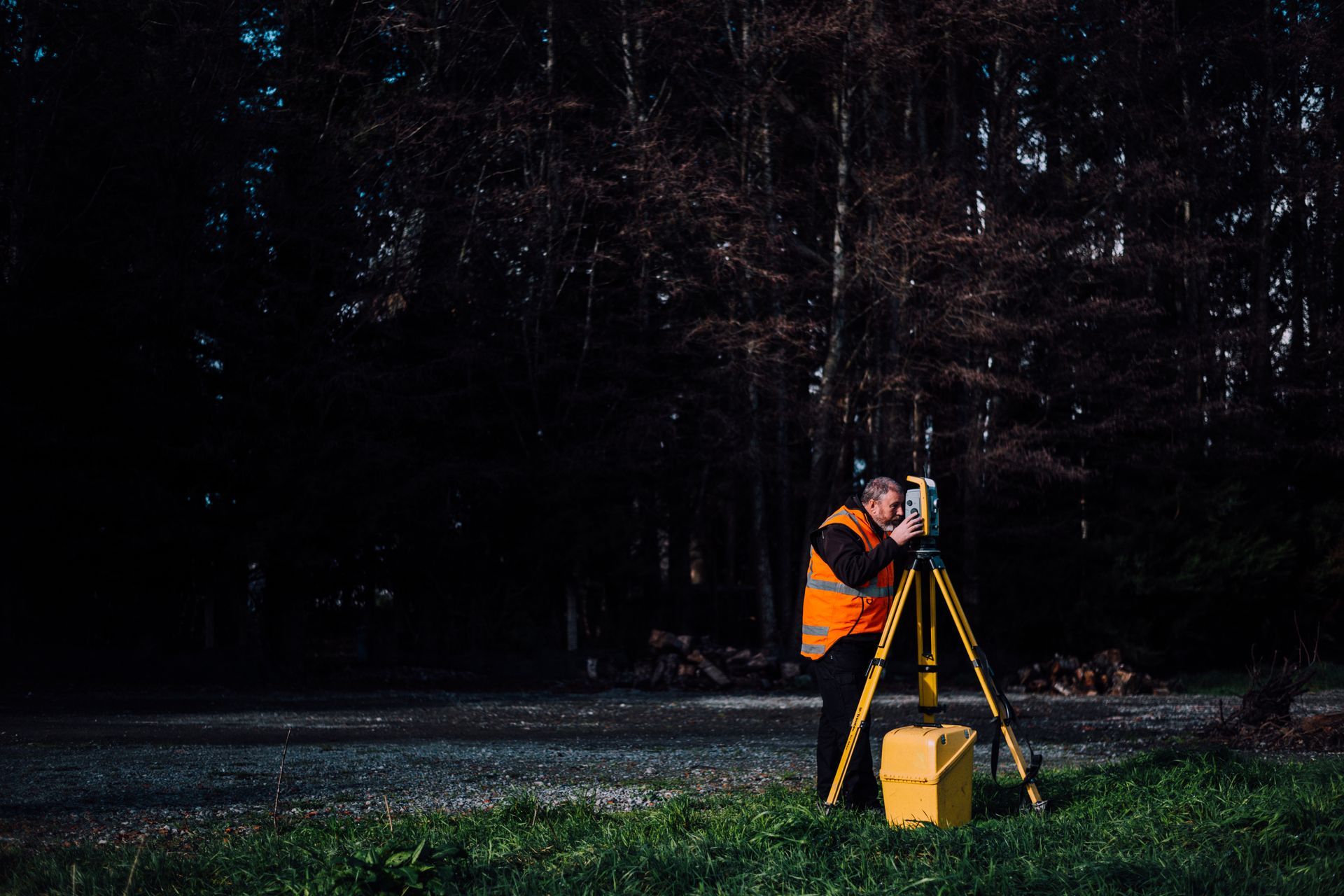Subdividing? No such thing as a stupid question.

Who are Survus Consultants?
Survus Consultants is a long established, locally owned family business. We've served the Canterbury community since 1957. We take pride in our commitment to full client satisfaction in our service and ability to think outside the square to provide cost effective results with your property.
With just over twenty full-time staff, we have plenty of capacity to deal with projects of any scale. With careful prioritisation and delegation, using each staff member's area of expertise, our internal processes and procedures ensure we get the job done once, done right, on schedule and within budget. Our project motto is that we are "large enough to cope; small enough to care".
We specialise in all types of subdivisions, having all the required expertise either in-house or available from trusted and reliable sub-consultants that we have long term relationships with. We can take care of the whole project from beginning to end or we are happy to work with you and alongside you, if you wish to project manage some of the development yourself.
Although we specialise in subdivisions, we do a lot of other things relating to the building industry, including site surveys & topo plans, building set outs, building location certs and anything else that is required by architects, builders and developers.
Every job is of equal importance to us, and all get the same attention to detail to ensure completion in a timely manner.

What is land surveying and why is it important?
Land surveying is the profession and science of determining the positions and boundaries of land. It involves measuring, mapping, and analyzing the physical features and legal boundaries of a property. It is crucial for various reasons, such as establishing property boundaries, creating land subdivision plans, preparing for construction projects, resolving boundary disputes, and ensuring compliance with local regulations and zoning laws.
What do land surveyors do?
Land surveyors in Christchurch offer a range of services, including boundary surveys, topographical surveys/site surveys, construction surveys such as building set-outs, Building Location Certificates etc, subdivision planning, easement plans, engineering, cadastral surveys, and resource consent applications.
... what's a cadastral survey?
A cadastral survey involves the measurement and documentation of land boundaries and the creation of cadastral (property) plans. These surveys are essential for property transactions, boundary disputes, and legal purposes.
Can a land surveyor help with resource consent applications?
Yes, land surveyors often assist with resource consent applications by providing the necessary survey information and documentation required by local councils for development projects. We can also take care of the planning side of things as well.
Can land surveyors resolve boundary disputes?
Land surveyors play a crucial role in resolving boundary disputes. They can accurately determine property boundaries based on existing legal documentation, historical records, and physical measurements, helping to settle disputes between neighbors or property owners.
What am I allowed to do with my land?
Ah ha! Trick question. It depends where you live, the planning rules in your area, and the unique features of your site. Subdividing land involves complying with local laws, regulations, and planning requirements. This will include obtaining consent from the local council or relevant authorities, conducting surveys, preparing subdivision plans, and addressing infrastructure and environmental considerations. A subdivision plan is a detailed representation of the proposed subdivision, showing the new boundaries, lot sizes, access ways, easements, and any other relevant information. This includes provisions for the likes of water supply, sewage systems, roads, utilities, and other necessary amenities.
What does 'subdivision' even mean?
There are a number of ways to subdivide land, including the creation of freehold (fee simple) titles, crosslease and unit titles, as well as boundary adjustments. A subdivision consent is generally needed for all types of subdivision.
The most common types of subdivision are:
- Subdivision to create a freehold (fee simple) title
- Subdivision to create unit titles for multi-unit developments
- Boundary adjustments between existing freehold titles
- Updating the flats plan for a crosslease when the building outline has changed
- Change of tenure (e.g. conversion of a crosslease title to a freehold title)

We're in Canterbury - surely things are a bit different post-earthquake?
As a result of the multiple earthquakes since September 2010 in the Canterbury area, there are many irregularities in the available LINZ survey data. The damage caused to the survey framework in Christchurch is unprecedented anywhere else in New Zealand. It has been, and still is in places, an absolute minefield for survey reference points that have moved in some instances up to 1.2m or more, where tolerances are at best 10mm.
When undertaking any cadastral survey work, involving accurate topographical work, building fixes and re-establishing existing boundary positions, good survey practice requires that we find a minimum of three reliable old non boundary reference marks to get correct orientation. More frequently than not, these marks are buried underground and require digging for (often in the middle of the road). So, if you see a surveyor in the middle of the road with a steel bar and a spade digging a hole, he is likely looking for a buried mark (which is treasure to a surveyor!). Since the earthquakes, and in some instances before the earthquake as well, some of these buried marks may have been destroyed through road, footpath and kerb reconstruction and repairs, or laying of new services and drains. We then search for boundary marks and other key marks recorded on previous survey plans, therefore you will sometimes see the surveyors for your survey set up down the road looking for marks, they will have a connection to your plan but are not adjacent to the site.
The position of buildings, trees, vehicles, and other obstructions that may not have been present when the original survey was done can also affect the survey work. For example, survey work done at a new subdivision in 1980 and revisited 40+ years later can have a lot of trees, houses, residents’ cars, and dog kennels on site that weren't there when the inter-visible marks were installed. If you ever want a good wood stacker or dog tamer, talk to one of our field surveyors. There are more wood sheds and dog kennels in the back corners of your properties than anything else in the world, and that’s where the pegs have to go!
Anything else?
As a result of a directive from what used to be CERA (Canterbury Earthquake Recovery Authority) and their subsequent authorities, Council now have the authority to request a geotech report if required in relation to liquefaction risk, ground conditions and stability to ensure the suitability of the subject site for subdivision and subsequent development. Some subdivisions do not require these reports due to the size, location and local council. If you are creating no additional building sites or undertaking a boundary adjustment then a geotech report is an unlikely requirement.
Phew! What other requirements might come into play?
The rules and requirements for subdivision are contained in several documents:
- Christchurch District Plan, which contains the rules covering aspects such as size, shape, frontage and access etc.
- Development Contributions Policy
- Infrastructure Design Standard (IDS), which covers the standards for the installation of new works and services
The zoning of the land determines which particular rule/s apply. These may be:
- Allotment size and dimensions
- Property access
- Esplanade reserves or strips along the banks of a waterway
- Natural hazards
- Water supply
- Stormwater control and disposal
- Sanitary sewer disposal
- Electrical energy supply
- Telecommunications service
- Provision of land for recreation reserve/open space
- Easements
- Building locations
- Preservation of vegetation/landscape
HAIL (Hazardous Activities and Industries List) Report
The "National Environmental Standard for Assessing and Managing Contaminates in Soil to Protect Human Health" (NES for short) came into effect on 1 January 2012, and this has affected the subdivision and building requirements of Councils nationwide.
Under NES, proposals involving the subdivision or change of use of land, automatically trigger the need for a preliminary site investigation. However, a preliminary investigation would also be required for any site where HAIL activities are known to have taken place. The complete list of HAIL activities can be viewed here.

Summary
It doesn't matter if you know exactly what you want or have no idea - we can make sure you get what you need and none of the services that you don't.
Give us a call, send us an email, or drop in and see us - the coffee's on us.
Limitations of document
We accept no liability or responsibility whatsoever for, or in respect of, any use of, or reliance upon, this report by any third party. We will not accept liability or responsibility for the accuracy of information presented within this document.
Intellectual Property
The information provided in this document has been provided at no charge; however, it remains the property of Survus Consultants in its entirety.
